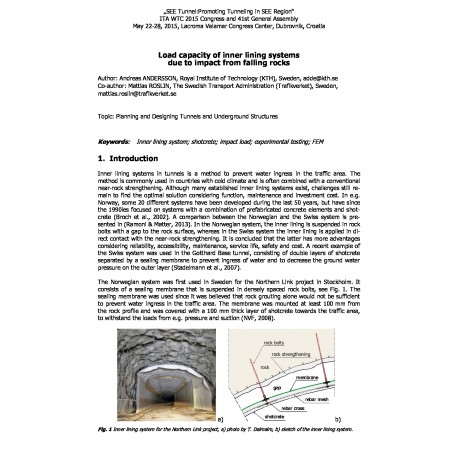Cart
0
0
No document
0,00 €
Total
Document successfully added to your shopping cart
Quantity
Total
There are 0 items in your cart.
There is 1 item in your cart.
Total documents
Total shipping
To be determined
Total
Search & filter
Search for a publication
Search & filter

Load capacity of inner lining systems due to impact from falling rocks
wtc2015_full_andersson
Inner lining systems in tunnels is a method to prevent water ingress in the traffic area. The method is commonly used in countries with cold climate and is often combined with a conventional near-rock strengthening. Although many established inner lining systems exist, challenges still re- main to find the optimal solution considering function, maintenance and investment cost. In e.g. Norway, some 20 different systems have been developed during the last 50 years, but have since the 1990ies focused on systems with a combination of prefabricated concrete elements and shot- crete (Broch et al., 2002). A comparison between the Norwegian and the Swiss system is pre- sented in (Ramoni & Matter, 2013). In the Norwegian system, the inner lining is suspended in rock bolts with a gap to the rock surface, whereas in the Swiss system the inner lining is applied in di- rect contact with the near-rock strengthening. It is concluded that the latter has more advantages considering reliability, accessibility, maintenance, service life, safety and cost. A recent example of the Swiss system was used in the Gotthard Base tunnel, consisting of double layers of shotcrete separated by a sealing membrane to prevent ingress of water and to decrease the ground water pressure on the outer layer (Stadelmann et al., 2007).


